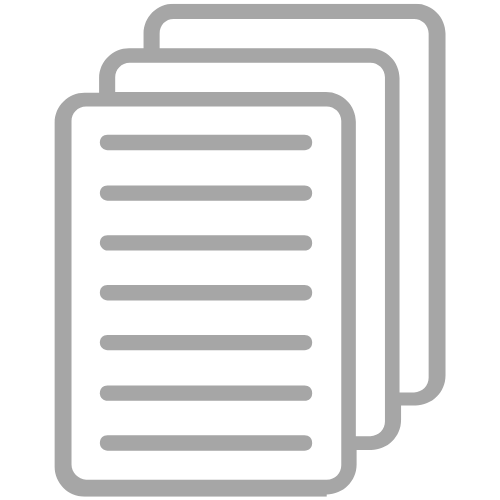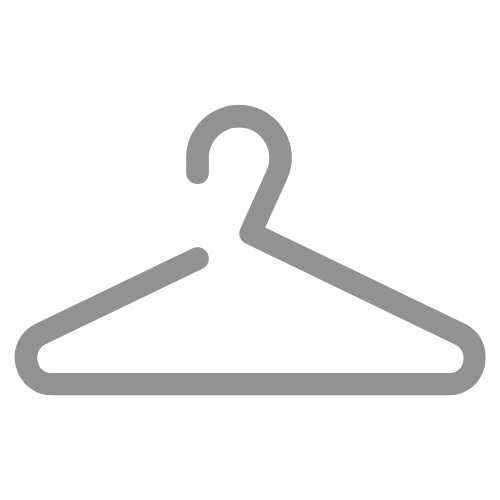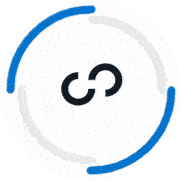Humans are inherently visual creatures. Studies have proven this time and time again — and these studies have yielded some fascinating stats on the matter. Here’s a particularly mind-blowing metric: our brains process images 60,000 times faster than text!
This is an important notion to consider when you’re creating your resume. The truth is, when you’re applying to jobs, most recruiters and hiring managers are scanning through your resume a mile-a-second. There are dozens (if not hundreds) of competing applications flooding in — and hiring managers simply don’t have the time/energy to carefully review each one.
That’s why, in addition to presenting you in the best possible light, your resume also needs to quickly capture and hold the reader’s attention. And, given our visual propensity, using resume icons can help you accomplish this. Adding a few icons in key areas of your resume can make it stand out just a little more. And, when it’s your potential dream job on the line, every bit counts!
So, in this article, we’ll be exploring:
- What resume icons are
- How to use resume icons on your resume
- Where to find resume icons to use
Let’s dive in!
What Are Resume Icons?
At this point, we’re all familiar with icons. We see them in the apps we use, the content we view, on car dashboards and street signs…icons are everywhere! To clarify, an icon is any minimalistic graphic that represents a basic concept, action, or feeling.
For example, when you want to send a message on Instagram, you tap the little paper airplane icon in the top corner. Or, here’s a more classic example: a cigarette surrounded by a circle with a line through it. We all know what that means!
So, what does this have to do with resumes? Well, including icons on your resume can make it more visually appealing and scannable — ultimately improving the ‘user experience’ of the reader.
To get a better understanding, let’s just take a look at some first-hand. Here are some examples of common resume icons you might want to use:
Email Icon
LinkedIn Logo
Contact Icons
General Symbols
Other Icons
Now that we’re clear on what resume icons are, let’s discuss how to use them properly and for maximum effect.
How To Use Resume Icons On Your Resume
Adding icons can be a great way to spice up your resume — but there are some best practices you need to be mindful of. Including resume icons haphazardly or excessively can work against you, rather than in your favor.
To start, here are some general scenarios in which you might want to use a resume icon:
Next to a section header..
to emphasize the theme of that section. For example, a briefcase icon next to the ‘Work Experience’ section header adds a little extra punch and promotes quick/easy scanning.
In the contact section…
to designate your email, phone number, or social profiles. Although email addresses and phone numbers are self-explanatory, adding small icons next to each makes the whole section look more organized and aesthetically pleasing.
To highlight key points…
that you want to draw attention to. For example, using checkmarks next to a list of accomplishments (as opposed to regular bullet points) can make them stand out more while conveying a more affirmative tone.
To add some stylistic flair!
There’s no limit to what you can do with resume icons; including them is a personal choice based on your unique preferences. That being said, it’s important to use them in moderation (more on this below).
Here are 4 Tips For Using Resume Icons Effectively
- Keep it small. Resume icons don’t need to be large to make an impact. In fact, you’ll generally want to approach them with a ‘less-is-more’ mindset. Large icons can be distracting and come across as tacky.
- Keep it simple. Similar to the point above, you’ll want to avoid using intricate, flashy icons. In addition to being distracting, they may look unprofessional. Instead, opt for minimalist designs.
- Keep it consistent. Make sure all of the icons throughout your resume look as if they came from the same ‘palette.’ If the designs are too different (stylistically), then your resume will appear disjointed.
- Use in moderation. Last but not least, we have the golden rule of resume icons: moderation. Use them sparingly — again, minimalism is the preferred route. There’s no definitive rule for how many icons you can use; at the end of the day, it’s a judgment call.
Ok — we’ve discussed what resume icons are and how to use them effectively. Now the question is, where can you get them?
Where to Find Free Resume Icons
Good news! There are plenty of websites that offer expansive collections of downloadable icons free of charge. But before downloading and using any icons, you should always check whether the external license on the original source of the image is free to use. Some images may be listed as free for personal use, while other icons and images require attribution.
Here are some options I’d recommend:
Flaticon – the largest icon database on the web with nearly 4 million free icons to choose from. Icons are grouped into packs with the option to buy premium packs.
Freepik – a solid graphic design resource that offers tons of free symbols alongside other files like vectors and stock images. Offers both free and premium downloads.
Iconmonstr – a smaller library to choose from. However, most of the icons are highly consistent in their clean, minimalist aesthetic — which makes selecting the right one a breeze.
Pixabay – has 1.9 million free images for you to use, and many of them are vector graphics that can be used as resume icons.
More Resume Resources To Guide You
When applied well, resume icons can be a great way to take your resume up a notch, adding structure, style, and clarity to an otherwise text-heavy document. It may seem like a small tweak, but when it comes to resumes, every detail matters.
And, speaking of crafting a killer resume, we’ve only just scratched the surface! For more tips, be sure to check out the following resources:
And, finally, to learn my unconventional strategy for landing great jobs without applying online, check out my ultimate guides on Value Validation Projects and How To Get A Job Anywhere Without Applying Online!


























